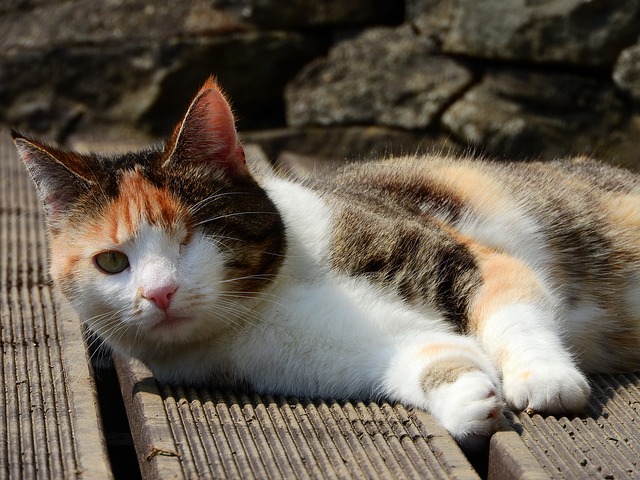Tips for Adopting a Special Needs Cat
Posted: 11/06/2023 | BY: Erin Cain | Categories: Uncategorized
Are you thinking about adopting a cat from a rescue or shelter? Around 3.2 million cats are surrendered to shelters every year, and unfortunately, a portion of those cats are special needs pets. Too often, potential adopters go to a rescue looking for the perfect kitten or cat, entirely overlooking the cat who is blind, deaf, or missing a leg. Special needs cats are more likely to be euthanized in a shelter compared to healthy cats. If you are looking for a faithful companion and an opportunity to save a soul, consider adopting a special needs cat. While they do require some additional care, your love and care for them will change their lives. Here are some important tips for adopting a special needs cat.

1. See beyond the disability.
Sadly, stigmas surrounding special needs pets are rampant. Some people believe that pets with special needs cost more in care, particularly in veterinarian bills and medications, and because they are different from able-bodied pets. These misconceptions couldn’t be further from the truth. Cats with special needs have the same desire to live in a relaxing, playful, safe environment as any other animal. If you choose to adopt a special needs cat, treat her like the cat she is and not as something different.
When you look beyond the cat’s disability, you will see a beautiful, unique personality and a true companion. Plus, you will have wonderful rescue staff to help you prepare your home and help your new cat out once she is living with you.
2. Adapt your home to the cat’s needs.
Bringing a special needs cat into your home doesn’t require major renovations; minor modifications based on the cat’s needs will do. For example, some small ramps may be helpful should your home have many stairs or the cat’s litter box may require relocation due to the cat’s blindness or impaired motor skill functions.
Some furniture relocation or decluttering may be initially necessary to create clear paths for a blind or sight-limited cat; however, to avoid confusing or stressing the cat, keep the set up in your home consistent for her. Because a blind cat will depend on her memory to navigate your home, consistency is key to giving your cat confidence and a sense of security. For any special needs cat, check that power cords or other items that can cause harm are out of the cat’s reach.
3. Be patient.
It takes time for any pet to adjust to a new environment, and the onus is on the pet parent to be patient as the pet gradually becomes accustomed to you and your home. The same goes for a special needs cat. Don’t become frustrated or think the cat dislikes you because she is restless, hiding, or reluctant to approach you. Just like people, it takes time for animals to adjust and trust again after experiencing trauma. With time and love, your special needs cat will turn to you for support as she continues her healing process.

4. Learn everything possible about the cat’s needs.
With help from the rescue or shelter staff, you can begin to understand better your cat’s special needs and how you can make life easier for her.
For blind or seeing-limited cats:
- Keep all essentials, such as the litter box and food and water bowls, in the same location.
- Give your cat toys that squeak or crinkle instead of visually-oriented ones.
- Always talk gently to your cat as you approach her, and for one-eyed cats, walk toward them from their sighted side.
For deaf cats:
- Walk around the cat heavily or tap on the floor so your cat can feel the vibrations and know you are near.
- Offer plenty of visually-oriented toys for stimulation and fun.
- Wake up a sleeping deaf cat by gently touching the area around the cat rather than the cat herself. This method eliminates any startled reactions from the cat.
For three-legged cats:
- Provide a step or stairs for your cat to get up and down from the couch, bed, etc.
- Have cat wipes available for necessary litter box clean-ups.
- Feed your cat a specialized diet as amputee cats are more prone to gaining weight.
For Cerebellar Hypoplasia cats:
- Use a litter tray with high sides to help your cat with balance and support.
- Provide a sturdy, slightly raised water bowl to prevent accidents.
- Use lots of pillows, rugs, and cushions to provide plenty of support for crashes.
- Use a ramp covered with carpet to help your cat get up to her favorite perches.
5. Let pet insurance help cover the costs.
If you are concerned about veterinary and medical costs for a special needs cat, you can remedy that issue by purchasing a pet insurance policy. Pet insurance helps you cover emergency veterinary bills, which can save you thousands of dollars over the lifetime of your special needs cat. Get an insurance quote for your cat, then take this crucial next step to give your special needs cat the best life possible.
An enriching and rewarding experience awaits!
Special needs cats need all the love and positivity they can get, and you can make a difference in their lives by bringing one into your home and life. However, this won’t be a one-way relationship. You will reap the benefits and rewards of saving a cat’s life and having your days brightened by a loyal, loving friend. Adopt a special needs cat, and watch two lives transformed for the better.
References:
- ASPCA. (2021). Pet Statistics / Shelter Intake and Surrender. Retrieved from https://www.aspca.org/animal-homelessness/shelter-intake-and-surrender/pet-statistics
- West Park Animal Hospital. (2021). Adopting the Oddballs: Special Needs Pets. Retrieved from https://www.westparkanimalhospital.com/blog/adopting-the-oddballs-special-needs-pets/
- Bingham, A. (n.d.). Do You Have Misconceptions About Special Needs Cats? Retrieved from https://iheartcats.com/do-you-have-misconceptions-about-special-needs-cats/
- Pet Assure. (2021). Special Needs: Living With a Blind Cat. Retrieved from https://www.petassure.com/new-newsletters/special-needs-living-with-a-blind-cat/
- Brown, M. (2020). 6 Helpful Truths About Trauma From a Special-Needs Cat. Retrieved from https://medium.com/invisible-illness/6-helpful-truths-about-trauma-from-a-special-needs-cat-d99870915f06
- International Cat Care. (2018). Amputation in Cats. Retrieved from https://icatcare.org/advice/amputee-cats/
- Stregowski, J. (2020). Feline Cerebellar Hypoplasia. Retrieved from https://www.thesprucepets.com/feline-cerebellar-hypoplasia-4171881
Disclaimer
The information contained on this blog is intended for informational and educational purposes only and should not be construed as medical advice. It is not a substitute for professional veterinary care. Always consult with your veterinarian before making any changes to your pet's health care or treatment plan.
The authors of this blog are not veterinarians and do not claim to be experts in pet health. The information provided here is based on our own experiences and research, as well as information from reputable sources. However, we cannot guarantee the accuracy or completeness of this information.
We encourage you to do your own research and consult with your veterinarian before making any decisions about your pet's health.
Previous post
Does Your Pet Need an Annual Exam?Next post
Do You Want to Adopt a Rescue Dog?Compare top pet insurance providers & plans.
Enter your dog’s age in years and months to calculate their age equivalent to human years.
Calculate your dog’s ageEnter your cat’s age in years and months to calculate their age equivalent to human years.
Calculate your cat’s age